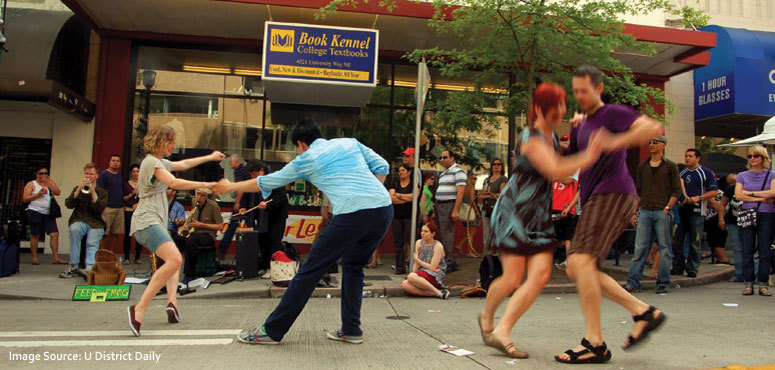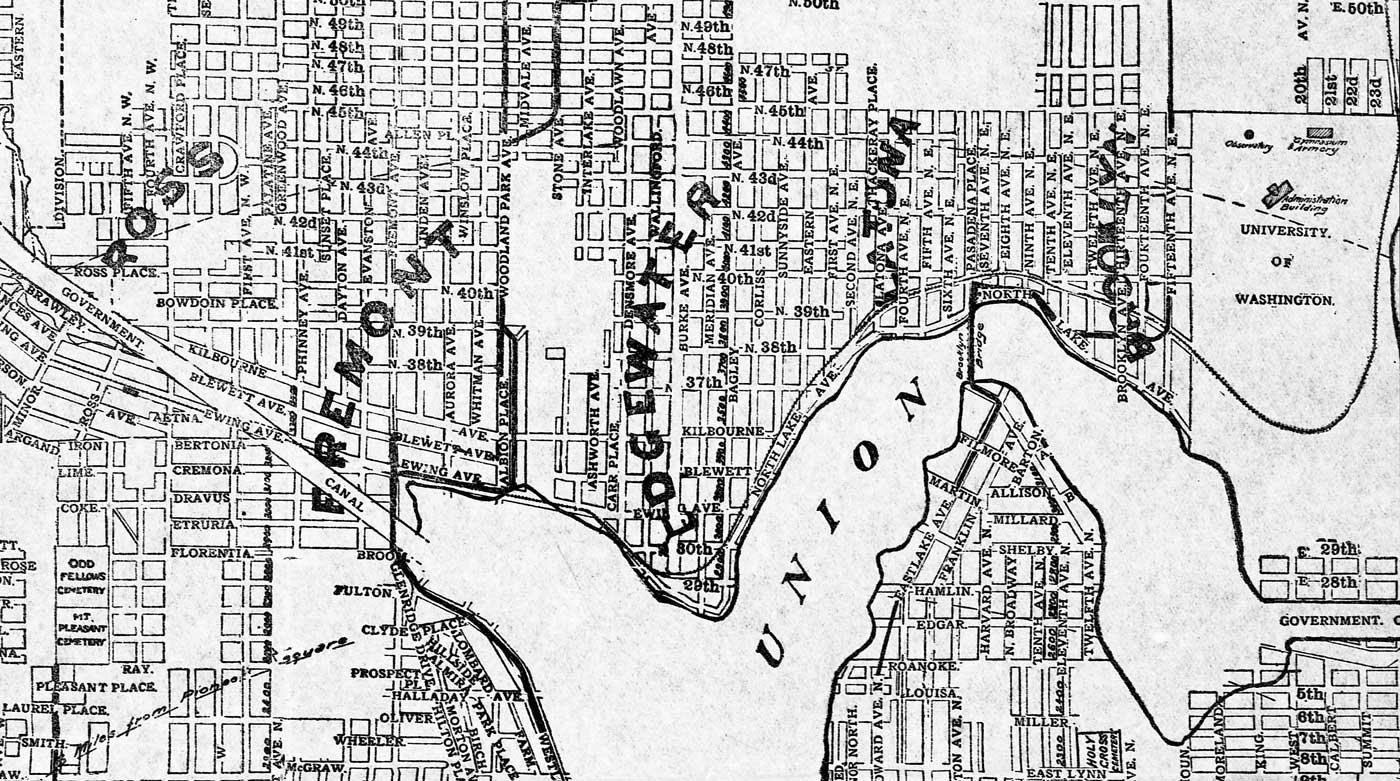Site Report #4

The Office of Planning and Community Development's idea of high rise separation at U District.

The eclectic vibes that the residents of the U District urge OPCD to maintain in their urban development plan.
Today, the Ave very much resembles the ideals of the U District community as well as the City of Seattle’s urban development plan. The block is mainly occupied by a large student population, which is unsurprising considering the close vicinity of many residential areas to the University of Washington. Interestingly, the U District has everything a resident of a larger urban community needs: shops and restaurants, small parks, and grocery stores. If one takes a glance back into history, it’s understandable why the U District, regardless of being a smaller town, doesn’t sacrifice any amenities a larger urban landscape possesses.
When U District began its development, it was sparsely colonized and without any proper roads or efficient transportation methods, it became a nuisance for Washington residents to commute to the U District. According to a historical analysis by the consultants of the Historic Seattle Preservation and Development Authority, Folke Nyberg and Victor Steinbrueck, from Seattle, one would have to take a wobbly horse carriage to a boat that would cross the Lake Union, then back onto a horse drawn vehicle or up a hill to the U District. Railroads were built as well, which were mainly used to transport caskets north of the district, but they were long and simply an inefficient mode of transportation for anyone attempting to travel from Seattle. This arduous commute and U District’s isolation motivated the self-sufficiency and vibrant economy that many residents and tourists see today.
Since then, the U District’s main stakeholders were the common business owners with a few building churches and spearheading primary education facilities. Once the University of Washington relocated to the U District in 1893, the development of the U District became aligned with the goals of the campus – fostering an academic community amidst the various cultures and history within the Ave. Seattle’s Office of Planning and Community Development envision U District in a similar form. In their 2016 Urban Final Recommendations plan, the OPCD ties the much-anticipated completion of the new light rail station with the urban growth of the U District. Through this growth, they see more variety of housing options that include affordable housing for larger families, more jobs throughout the neighborhood, and a focused housing growth south of NE 50th St.
It’s definitely a grand idea and from the graphics, it appears to resemble parts of downtown Seattle with the large glass residential buildings. On the other hand, this impressive scheme is hotly contested and the Office of Community Development promises to maintain the cherished visage of the neighborhood – an eclectic cultural immersion hotspot that balances a loud economic with quiet suburbia. The UD Final Recommendation acknowledges that no developments would occur north of NE 50th St., the area where my block is located which is where suburbia on the Ave begins, and the building heights on the Ave will stay relatively low, similar to what it looks like currently. Moreover, this commitment to urban growth aims to increase family residents in the U District to diversify the neighborhood. According to the OPCD, by placing more parks, spaces between buildings, and units with 2-3 bedrooms, it would attract more families to live in the U District. This is a commendable idea, which would allow more families in further areas of Washington to live closer to the city at a reasonable price.
However, according to the 2013 UD Residential Market Analysis, it’s difficult to see any family-friendly residential areas near the U District. The development of the U District is highly intertwined with the plans of the University of Washington. The neighborhood is significantly impacted by the undergraduate and graduate community, and therefore most businesses cater a quick, cheap satisfaction. The commercial area of the Ave is hardly a family supermarket. The UD Residential Market Analysis recommends that putting family-sized units in high rises is not reasonable unless they’d be willing to pay a higher cost. The UD Market Analysis advises that bringing families into areas of the U District where developing high rises isn’t the focal point would be a better plan.
The new light rail station has already begun construction and there are small side projects near it to improve sidewalks, which would prepare for the influx of commuters. Aside from that, there haven’t been any significant construction sites for high rises or new parks. Although the OPCD might need to do more strategizing with their urban growth plan, their ideals aren’t far from what the U District aims to be, according to the perspective of both the university and college students. Their plan is closely tied with the development of the station and thus, most of the advancements will cater to the growing diverse community. By building more residential spots and areas for business, the OPCD honors what the self-sufficiency of the U District. However, it’s probable that this light rail station might actually drive some students away from the eclectic neighborhood. Since the commute to the UW will be much easier with a station so close to the campus, some might opt to live in a cheaper, outer neighborhood and commute to campus.
The future of the U District will definitely be interesting. It’s clear that the population would increase; with easier access to a place, it’s more likely for people to arrive. In terms of urban growth, it’s hard to see the U District with modern high rises especially because if these were to be residential areas, they would be highly expensive compared to the average $1,200 per month rent at the U District. When considering the future development of the U District, it’s important to take into account who the neighborhood is supposed to serve. The district is strongly tied with the university and therefore, it’s main stakeholders have to be the students first and foremost. By placing more affordable housing units for students, it promotes accessibility to education and that’s what the university most likely envisions the U District to be. Concurrently, the U District is a unique urban center because it features both a rapid commercial area and a calmer, suburban neighborhood. It’s important to maintain this aspect because the U District is an old town and parts of it are still occupied by small families. By urging urban growth with high rises and increasing the population, this could disrupt that balance and push long-time residents out of the neighborhood.
The ideal student-centered U District must have three aspects: ease of transportation, affordable housing, and the current balance of environments the district currently has. The new station accomplishes ease of transportation. Housing should still remain the average and the developments of high rises should not increase that. Finally, the U District must maintain its diverse environment in order to accommodate for new students and older residents.
